
Official Edgar Rice Burroughs Tribute and Weekly Webzine Site
Since 1996 ~ Over 15,000 Web Pages in Archive
Presents
Volume 1389

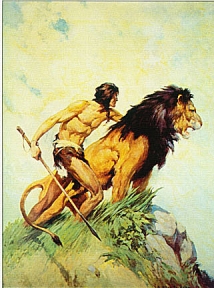 |
Tarzan and the Speed of the Big Cats by David Adams |
As every school boy knows, Tarzan was much faster than the big cats that surrounded him in his jungle home. From his youth had to be swift or he would have quickly become the main item on the dinner menu of Sheeta, the leopard or Numa, the lion. Peter Capstick points out that leopards are especially fond of eating primates of all kinds.We must assume that Kala saved the child many times from the rending claws and fangs of the ape’s hereditary enemies, but by the time Tarzan was ten years old, we was already capable of looking out for himself, as we read in Tarzan of the Apes.“Interestingly, it was the leopards that clearly took the lead among “Mature” man-eaters, most especially those who were “Uninjured.” Under the heading “Mature, Uninjured,” the leopard swept the contest with an 84.7 percent correlation, whereas the tiger rated only 47.3 percent and the lion but 32.6 percent. This is a critical statistic because it tends to bear out the concept which I, at least, champion, that the leopard is a natural, matter-of-fact, everyday man-eater of primates, be they baboons, gorilla young, monkeys, chimps or people” (p.183-84, Capstick, Maneaters).
“Though but ten years old he was fully as strong as the average man of thirty, and far more agile than the most practiced athlete ever becomes. And day by day his strengthOf course, everyone remembers Tarzan’s famous encounter at the waterhole with Sabor, the lioness, where he plunges into the water faster than Sabor can leap. Here Tarzan exhibits the speed and presence of mind that will save his life again and again in this dangerous environment.
was increasing.”“But of the two evils his quick mind chose the lesser ere the first note of Sabor's scream had scarce broken the quiet of the jungle, and before the great beast had covered half herBut really how fast was Tarzan of the Apes? Can we picture him with the zen-master-like reflexes that can pluck an arrow out of the air before it reaches its target? Perhaps he was faster than that.
leap Tarzan felt the chill waters close above his head.”Burroughs was fond of describing Tarzan’s speed as “swift as Ara, the lightning.” The familiar phrase is used so often that one tends to gloss over the reading as a kind of Homeric formula without thinking about the accuracy of its descriptive meaning. He sets it before us for the first time in chapter 9 of Tarzan of the Apes.
“Quick was Sabor, the lioness, and quick were Numa and Sheeta, but Tarzan of the Apes was lightning.”By the end of this article, you will come to see that Burroughs was not exaggerating but simply stating the amazing facts.How fast must one be to fit this telling description?
“Often they hunted him, and more often he hunted them, but though they never quite reached him with those cruel, sharp claws of theirs, yet there were times when one couldWe will begin with Numa, the lion.
scarce have passed a thick leaf between their talons and his smooth hide.”
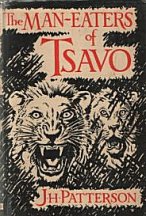
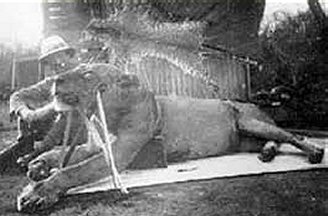
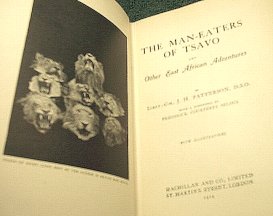
Peter Capstick, who hunted many lions in Africa (and who writes about his experiences with a particularly enjoyable flair) tells us that a charging lion is nothing but a tawny blur. Hesitation, even for a moment, for a man who intends to kill one armed with but a hunting knife would be fatal.“A lion starts off at the speed that most other Big Fivers can’t manage even after they build up momentum. The leopard is smaller and faster, but I still think that whoever came up with the platitude “cat-quick” was thinking of old Simba. When he comes for you, there’s no doubt about it. Considerably faster than a horse from a standing start, he barrels through the bush and grass, grunting in determination fit to give a crusader loose bowels. You’ll read about his springing and otherwise wasting time and motion, but it’s generally not so. The lion comes in a yellow-beige streak, low to the ground, in a gliding rush led by a vertical corona of mane bristling as if with static, a setting that surrounds a pearl and coral matrix of mouth the size of a reasonable watermelon.
"How fast? Trust me, though I never timed one. I would guess around forty miles per hour; some say more, some less. Whatever, it is a very large package of claws, teeth, and determination that takes an astonishingly short time to get to you if you don’t donate something over .375 caliber into it in one big hurry” (p. 217-18 Capstick, Death in the Dark Continent).
Now everyone knows that Tarzan never met a lion’s rush face-to-face the way the foolish Tarzan actors do in the movies. To greet Simba this way would result in loosing your head in short order. (A 450 pound male lion is also capable of biting completely through the chest of a man).
Also as familiar as a formula is the Burroughsian description of Tarzan’s incredible speed. At the last minute before the fatal meeting, Tarzan quickly steps aside, grabs the lion’s mane and swings himself onto the lion’s back and begins his fierce growling and lightning-like knife blows into the animal’s chest until he eventually reaches the lion’s heart.
How quick does one have to be to do this? Again, Capstick give us a good indication of the reaction time.
“I’d done it enough to know what to expect: the low, blinding rush; the hard grunts and lash of tail; the blur of white fangs; the shock of realizing that it was coming and you had a second, maybe less, to place a perfect shot into the vitals of the streaking target” ( p. 201, Capstick, Death in the Dark Continent).So Tarzan had perhaps less than a second to get to one side and end up on the lion’s back. The phrase, “swift as lightning,” starts to become clear.Numa remained close to the ground when attacking Tarzan. If he were leaping into the air, Tarzan would have had a much harder time accomplishing his amazing moves. And this method of lion attack is entirely accurate.
Tarzan could see him quite plainly now. Below the ape-man Bara was about to pass. Could he do it? But even as he asked himself the question the hungry man launched himself from his perch full upon the back of the startled buck.
In another instant Numa would be upon them both, so if the ape-man were to dine that night, or ever again, he must act quickly.
Scarcely had he touched the sleek hide of the deer with a momentum that sent the animal to its knees than he had grasped a horn in either hand, and with a single quick wrench
twisted the animal's neck completely round, until he felt the vertebrae snap beneath his grip.The lion was roaring in rage close behind him as he swung the deer across his shoulder, and, grasping a foreleg between his strong teeth, leaped for the nearest of the lower branches that swung above his head.
With both hands he grasped the limb, and, at the instant that Numa sprang, drew himself and his prey out of reach of the animal's cruel talons.”
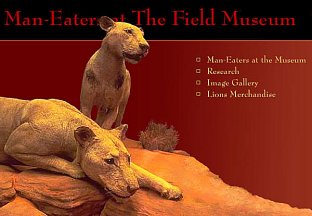
Man-Eaters of the Field MuseumAnd Tarzan was indeed as swift as the lightning. His encounters with Sheeta, the leopard, point this out in sterling fashion. Capstick again paints the initial picture for us.
“The big stuff is all fast, but fast is relative, particularly when whatever it is is coming in your direction. Lions are tawny blurs in high gear; buff, rhino, and jumbo all big and seeming irresistible. Leopards are simply unbelievable” (p. 157 Capstick, Death in the Dark Continent).Leopards are quick and silent. The descriptions of their speed almost defy belief. If Tarzan had to be swift as lighting to outmaneuver Numa, the lion, what moves he must have made in his encounters with Sheeta!Burroughs does allow Sheeta a scream as it attacks, but who can deny the dramatic effect of this deadly encounter from a chapter of The Beasts of Tarzan?“Even the lion, although he’s more likely to kill you if he can actually close, will betray a charge with a growl or roar, giving you some idea where he’s coming from. Not the leopard. He never gives you an edge, saving that rush or spring for such close quarters that he’s sure he’ll nail you or he won’t come. With the most perfect camouflage in nature, he’s invisible until he turns into a golden-dappled streak of purest malevolence, biting and clawing with such speed that cases have been recorded in which wounded leopards have been reliably reported as having mauled as many as seven armed men in a single rush and then melted back into the grass before anybody could do anything but bleed” (p. 150-1 Capstick, Death in the Dark Continent).
Now, to meet a leopard attack head-on is as suicidal as meeting a lion in this way.“Akut had now wandered quite close beneath the tree wherein lay the waiting death. Sheeta slowly edged his hind paws along the branch still further beneath him, and then with a hideous shriek he launched himself toward the great ape. The barest fraction of a second before his spring another beast of prey above him leaped, its weird and savage cry
mingling with his.”“If he catches you, you’re in for a very interesting time. He will usually lead trump, fastening his teeth in your arm, shoulder, or face, itself a finesse since he’s really interested in unzipping you from adenoids to appendix. To manage this he uses his hind legs and the curved knives of his dewclaws, He is so good at doing what comes naturally that there are records of a single wounded leopard mauling five armed humans in one charge and melting back into the grass before sustaining so much as indigestion” (p. 137, Capstick, Death in the Long Grass).One need hardly explain the condition those movie Tarzans would be in after wrestling a leopard face-to face. Wisely, Tarzan always lands on the leopard’s back.“As the startled Akut looked up he saw the panther almost above him, and already upon the panther's back the white ape that had bested him that day near the great water.
The teeth of the ape-man were buried in the back of Sheeta's neck and his right arm was round the fierce throat, while the left hand, grasping a slender piece of stone, rose and fell
in mighty blows upon the panther's side behind the left shoulder.Akut had just time to leap to one side to avoid being pinioned beneath these battling monsters of the jungle.
With a crash they came to earth at his feet. Sheeta was screaming, snarling, and roaring horribly; but the white ape clung tenaciously and in silence to the thrashing body of his quarry.
Steadily and remorselessly the stone knife was driven home through the glossy hide--time and again it drank deep, until with a final agonized lunge and shriek the great feline rolled
over upon its side and, save for the spasmodic jerking of its muscles, lay quiet and still in death.”The Beasts of Tarzan is the Burroughs leopard manual par excellence. Here Tarzan befriends a leopard who hunts with him (and Akut and Mugambi in a deadly four musketeer union). The character of Sheeta may seem to be maligned by the author, but it only points up the difficulty in dealing with a hunter who is particularly deadly due to traits of character and coloration.
Some hunters think the leopard is a cowardly beast because it is an opportunist and does not come out and fight in the open unless it judges it has the advantage of the situation. One does not have have the opportunity to think for long when dealing with a leopard on the attack.
“Leopards charge from close quarters - - twenty yards would be practically a marathon. They’re virtually invisible until about a foot from the bridge of your nose and although about the weight of a reasonable chorus girl, actually require more pummeling to stop than the average bull elephant ” (p. 162, Capstick, Death in the Dark Continent).One of Sheeta’s feline features is its general invisibility due to its lovely rosette spangled coat that even Tarzan coveted and wore most of his life. In a very interesting tale by Capstick, he describes tracking a man-eating leopard after a tribe of 60 or 70 baboons have located the cat for the hunters by staring at a spot about 30 yards away.
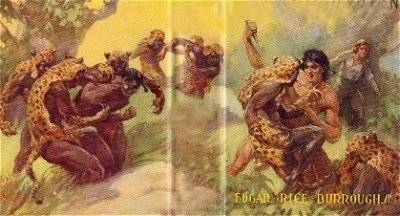
“The ground, except for an occasional tuft of low grass or dead branch, seemed as incapable of hiding a shrew as a leopard. Sure the cat had gone somehow across the 30 yards or so to more dense cover before we had come up, I went straight toward the gullies, not deeper than a foot and perhaps eight inches wide. When I was within six feet of the nearest, I slowly turned my head to check on Charlie. As I did so, there was the tiniest slithering rattle of a pebble on the dry earth which my darting eyes flashed back quickly enough to spot. There, in what I can only call an impression of motion, was the dappled disappearance of a big -- very big --leopard. He was long gone before I could have even dreamed of lifting my .375 rifle, let alone getting off a shot. A closer look showed a tiny gleam of reflected blood from the fur of a half-grown female baboon which the leopard had been shrouding in the ditch, as close to me as I was tall! Charlie and I glanced at each other without comment” (p. 128-29, Capstick, Maneaters).One might think that Burroughs was being unfair to Sheeta in Tarzan of the Apes when he says:“Sheeta, the leopard, alone of all the jungle folk, tortured his prey. The ethics of all the others meted a quick and merciful death to their victims.”Even in The Beasts of Tarzan where Tarzan links his life and fortune to the cat, he describes Sheeta as being “cruel.”“Sheeta's cruel fangs and tearing talons ripped and tore at the black hides.”And “wicked”.“To communicate his plan to the apes was not a particularly difficult matter, though their narrow and limited vocabulary was strained in the effort; but to impress upon the little, wicked brain of Sheeta that he was to hunt with and not for his legitimate prey proved a task almost beyond the powers of the ape-man.”Yet, these pejorative terms may be somewhat deserved when you consider that Chui, as he’s called in KiSwahili, does seem to have a mean streak, although it probably doesn’t mean much more than our faulty human judgment of what goes on in a cat’s brain. Capstick reports that:“They go on murderous binges, sometimes doing to humans what has become their trademark with livestock” (p. 170, Capstick, Death in the Dark Continent).And later, on the next page:“There are hundreds of verified accounts of a night-marauding leopard killing all the goats in a pen but eating little or none of the meat” ( p. 171, Capstick, Death in the Dark Continent).And yet, even the great white hunter has the utmost respect for this Sheeta.“I cannot but conclude that the leopard is hands down the slickest. The combination of intellect, natural shyness mixed with incredible boldness when things are going his way, and physical makeup, aggregate a creature that is without equal as an opponent to a sportsman” (p. 169, Capstick, Death in the Dark Continent).These characteristics are presented to show how difficult it is to meet a leopard on his own ground. Some hunters who spent most of their lives in Africa only rarely even saw a leopard, less killing one. They are truly the “ghosts in the darkness,” night hunters who can move without a sound and disappear on the wind.“One moment the cat was in the crotch, the next he was gone like ectoplasm. He had simply dissolved before our eyes. My heart stopped until I found him again, ten feet higher, standing on the bait branch” ( p. 149 , Capstick, Death in the Long Grass).Sometimes moving as swiftly as Ara, the lightning is not enough. Yet Tarzan was up to the challenge. The highest praise Burroughs can give the ape-man is to describe his moves as those of Numa, the lion and Sheeta, the leopard.
“Leopards love killing and eating dogs, and leopards’ superior moves in short order make most canines look as if they’re soaked in drying glue” (p. 171, Capstick, Death in the Dark Continent).Tarzan was a man with cat-like moves, yet his edge was a speed superior to those great cats, and combined with human intelligence this joining made him the deadliest beast of all. And we are indeed blessed because Burroughs gave us the “play-by-play” of these movements so we could see them clearly, blurs taken out, slow-motion, like in a dream we all dream of leaping aside, then suddenly riding the back of the beast we can all conquer because a swifter artist made it so.
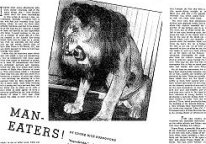
Man-Eaters! by Edgar Rice Burroughs
Works CitedBurroughs, Edgar Rice. Tarzan of the Apes.
------------------------------- The Beasts of Tarzan.Capstick, Peter Hathaway. Death in the Dark Continent. St. Martin’s Press, 1983.
----------------------------------- Death in the Long Grass, St. Martin’s Press, 1977.
----------------------------------- Maneaters. St. Martin’s Press, 1981.
October 27, 1997 ~ 8:04 pm
3160 words
Navigation Guide
to all the
David Adams Features

